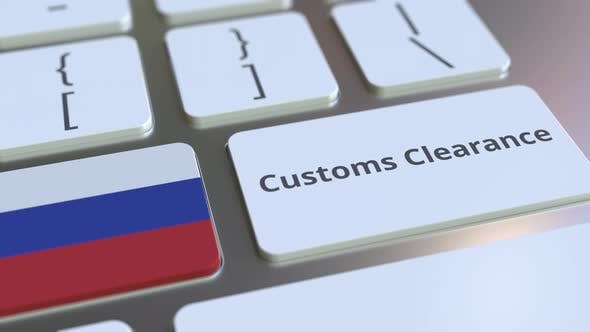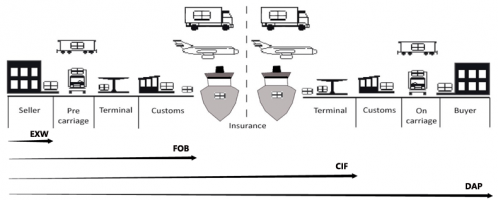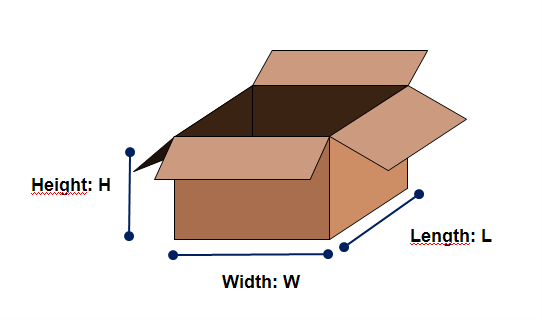Part 1. How to find a reliable freight forwarder?
Part 2. How many modes of transportation are there from China to the Philippines?
Part 3. How to save money?
A freight forwarder is an experienced person or a company from the international trade and transport community that coordinate and ship goods from one place to another by different modes of transportation.
When you want to ship by yourself or when you have a hard time trying to find a reliable business partner, a freight forwarder is the best option because he will help you find solutions for shipping from China to the Philippines. If you are an occasional carrier who knows little about international transport, we also recommend you to find a cargo agent who will be able to help you in this complex process.

In other words, if you want to save time, energy and money while making an international delivery from China to the Philippines by air, sea or land, consider using a freight forwarding agent; he will make sure your goods will arrive on time and at the final destination in the right conditions.
If you don’t have enough time and energy to go by yourself along this complex process, having a freight forwarder would make a great difference. They have experience in this industry which they’ll use in your advantage to reduce costs and help you find solutions to any transportation problems, and you will be able to save more time and money than if you ship by yourself.
When you’re importing goods from China, it is always best to choose a freight forwarder from there, regardless of the mode of transportation. The Chinese freight forwarders are the best option for overseas transporters because they have the advantage of language and geography, and you will also need a warehouse for storage and preparation. An experienced Chinese freight forwarder will have these abilities: he will be fluent in Mandarin and Cantonese; he will have a thorough knowledge of the Chinese business culture, experience in managing Chinese suppliers, category and sourcing process experience, quality control experience, audit experience, and logistics experience. In general, the local forwarders (from the Philippines) will often have to contact another agent in China to handle the picking, preparation, storage, and customs clearance.

A freight forwarder is a reliable and experienced agent who will help you find solutions for shipping from China to the Philippines. But to be sure they provide what you need, you
can ask them a couple of questions to assess whether they are qualified for your transportation or not. Time, money, and the success of your shipment from China to the Philippines is what matters.
1) Does the freight forwarder have a business license from the Chinese government? – Having a business license makes everything legal and transparent for you.
2) Does the freight forwarder have an official website, and has a good ranking on Google? – On their website, you can find the necessary information about their services and costs. Not to mention that in these modern days, Google reviews are a must-have for any company that respects itself and cares for its customers.
3) Does the company have a good insurance plan? – Having a good insurance plan is very important because it will compensate for your merchandise if any damage occurs in shipment or warehousing.
4) Do they have a complete cargo tracking system to update your cargo progress in real-time? – Finding a cargo shipping partner that offers cargo tracking is crucial because you can see in real-time where your shipping is and how much it takes to arrive at the final destination.
5) You can also ask them to provide the most recent shipment record or bill of lading – A bill of lading contains all relevant details about the type, amount, condition, and destination of the goods.
6) During the consultation, were the responses prompt, with professional advice and explanations? – If you are convinced by their services, but you still have some doubts about the process, it is best to try the freight forwarder with a shipment of small goods; this way, if anything goes wrong, you won’t lose a big amount of money.
Before talking about the modes of transportation is good to know what standards and regulations apply in the Philippines, and also which are restricted and prohibited goods.
The documents required for importing goods into the Philippines are: packing list, invoice, bill of lading; import Permit; customs import declaration, and certificate of origin.

Goods that would harm the national security, public safety and order, and morality, considered restricted and prohibited. These include: used clothing and rags, guns, right-hand drive vehicles, laundry and industrial detergents containing hard surfactants, used motorcycle parts, except engine, live piranha, shrimp, and prawns, dynamite and gun powder, obscene articles and printings, drugs, and so on.
Certain goods such as wood, plants, live animals and animal by-products, fishery and aquatic products, etc. need special licenses and permits from different authorities in order to import them into Philippines.
Some of the goods are absolutely prohibited and other certain goods can be imported under a license or permit.
Top 10 imported goods into the Philippines in 2018 were: electrical machinery and equipment, mineral fuels including oil, machinery including computers, vehicles, iron and steel, plastics, aircraft, cereals, articles of iron or steel, optical, technical, medical apparatus.
The mode of transportation is an important aspect and has to be evaluated when you’re planning the shipment (costs, shipment urgency, the value of the goods, and the size and weight of the package). Depending on your load volume, it is best to evaluate the mode of transportation when you are planning the shipment process because each option of transport has advantages and disadvantages, and you can significantly optimize your cargo flow, save money and time by choosing the right mode of transportation.
After you have selected your cargo agent, the collaboration between the two parts will begin. An experienced China-Philippines freight expert will have excellent communication skills understanding all your requirements, including time, budget, and mode of transportation.
In other words, when you are planning your shipment, you have to prioritize your needs, understand the process, and compare costs. By choosing the right mode of transportation, you can significantly optimize your cargo flow.
It is known the fact that 95% of product samples and a small amount of high-value goods are sent by courier worldwide.

If you have an urgent and quick delivery to make, express shipping it is the best option because is a relatively easy way to transport goods, and it takes, in general, 2 – 5 business days to reach your doorstep.
Express delivery is suitable for goods that are less than one cubic meter or 200 kilograms.
The delivery time from China to the Philippines by courier service (FedEx, UPS, DHL, and TNT) is around 3 business days. The prices and rates for express delivery are higher than other forms of transportation. Also, the cost of express shipping may increase during the holidays.
To save money, cargo agents or freight forwarders are the best solution because they can find you an express company that gives you a reasonable price, and they can also get a discount price that you won’t find on their official website.
Sea shipping is suitable in general for loads over 500 kilograms or when the size of the products occupies more than two cubic meters. However, it is also the most complicated mode of transportation, and it takes a long time, but sometimes this might be the only option.
From China to the Philippines, sea shipping time, in general, is estimated at around 4 to 14 days from port to port.
In China, there are several ports such as Shanghai port, Ningbo port, Shenzhen port, Tianjin port, Qingdao port, Xiamen port, Beijing port, and Hong Kong port, from which your shipping can leave to the Philippines. If your freight forwarder is located in these cities, you will have the advantage that he will be more familiar with the loading and unloading rules of each port, making it easier to handle your goods, saving you time.
The top ports for importing into the Philippines are: Manila Port (this is the Philippines largest and busiest port), Cebu Port, Iloilo Port, Subic Port, and Batangas Port,
Sea freight shipping is the best choice for bulk goods transportation. When importing from China, you can choose Full Container Load (FCL) or Less than Container Load (LCL), if your overall cargo volume doesn’t meet one full container requirement. There are three types of containers 20 ft.,40 ft. and a 40 ft. high cube container. The 20 ft. containers are designed to carry more weight such as minerals, metals, machinery, sugar, paper, cement, etc., while the 40 ft. containers are designed to carry voluminous cargo rather than heavy cargo, for example, furniture, steel pipes, paper scrap, cotton, tobacco, etc.
If you don’t have enough goods to fill a 20′ or a 40′ container (FCL), you should choose LCL. This enables importers to ship smaller amounts of cargo, which doesn’t have the right volume to make Full Container Load a viable option. This means your cargo is combined with other shipping cargos at the same destination, reducing your shipping cost. When combining several shipments in one container, your freight forwarder needs to do more work. LCL freight is calculated in cubic meters (CBM) and charged based on the volume.
FCL refers to when the quantity of your goods is large enough that they can be put in at least one container. In this case, the freight is calculated on an FCL basis. FCL shipment will be loaded and sealed at origin by your supplier, then shipped to your final destination.
You should choose this mode of transportation if your goods are smaller than 2 CBM and 200 kg, and/or you are in a hurry to receive the goods. In a matter of days, air freight can bring your cargo from a factory in China to your destination. On average, you can expect your cargo to arrive in around 3 business days. The optimal amount of goods you can send by air freight is under 500 CBM because it won’t be that costly.
Although 90% of goods are shipped by sea, when importers and exporters need to move high-value goods to the Philippines quickly and reliably such as seasonal goods, electronics, and/or perishable products, they use air freight.
The main airports in the Philippines are: Ninoy Aquino International Airport, Clark International Airport, Laoag International Airport, Kalibo International Airport, Iloilo International Airport, and Mactan-Cebu International Airport.
There are two classes of Airfreight, economy and express or fast air transportation.
This service applies for general cargo such as no dangerous goods, oversized or temperature-controlled goods. For this category, the price is relatively low compared with the express air freight. The time delivery for economic delivery is around 2 to 7 business days for the goods to be delivered to your doorstep.
With this service, you can transport in a short time, cargo of all shapes, sizes, and types, including dangerous and oversized goods. The time delivery for this mode of transportation is around 1 to 3 business days for the goods to be delivered to your doorstep.
There are two methods to calculate the air freight price. The first method is cost per kilogram multiplied with the cargo weight, and for the second one, for low-density cargo (low weight and high volume) you will be charged based on the volume it occupies.
To save money, you have to understand the terms FOB, EXW, CIF, and DAP because, in the same transport model, transport cost is a crucial factor.
Many websites like Alibaba use the quotations FOB, EXW, CIF, and DAP. In general, these quotations include information about where your cargo is being shipped from and where, the transport mode and equipment being used, and shipment details such as dimensions, weight and a description of the goods.
FOB means free on board or freight on board and is an international shipping agreement used in the transportation of goods between a buyer and a seller.
FOB is the primary mode of Alibaba’s quotation, which means that your Chinese supplier will be responsible for the transportation from the Chinese factory to the Chinese loading and unloading port. For example, if you see FOB Ningbo – Ningbo is a city and a port in China, and it means that this is the port that the supplier will ship your order to, which is covered by the FOB price, and from here, you are responsible for the freight. The freight is divided into two aspects – the first one is from China airport/port to the airport/port in the Philippines, and the second one is from the airport/port in the Philippines to your doorstep.

EXW stands for Ex Works. If you see this quotation on the website you are buying from, it means that the seller is making the goods available at their premises, or another named place.
In other words, EXW means that your freight has been increased one step, and you will be responsible for the transportation from the factory in China to the loading port in China. This is an aspect your Chinese freight forwarder will help you manage.
Your shipping costs will divide into three categories – From China factory to China airport/port – from China airport/port to Philippines airport/port – from Philippines airport/port to your doorstep. Over this, other transportation costs will be added such as Chinese export costs and customs clearance costs.
Finding a reliable freight forwarder is important because he will let you know where every cost is going, with no hidden expenses.
CIF stands for cost, insurance, and freight, and it means that the supplier is responsible for all transportation costs from the factory in China to the airport/port in the Philippines, including insurance.
In other words, CIF is an expense paid by the seller to cover the costs, insurance, and freight if a package or item is lost or damaged while it is in transit to an export port. The seller must cover other expenses such as additional customs, export paperwork, inspections or rerouting, but once the freight is loaded, you (the buyer) become responsible for all other costs, including the expenses from the airport or port in the Philippines to your doorstep. With CIF the supplier adds an extra charge to compensate for their efforts, and it becomes more expensive than FOB.
It will save you time and money if you find a freight forwarder, because usually, the suppliers in China will also find a freight forwarder to deal with the whole process, and they cannot professionally update the status of your goods promptly.
DAP stands for delivery at place or destination delivery. If you see this quote on the website you are buying from, it means that the seller will handle all the charges and the delivery to the buyer facilities, but the import taxes will be paid by the buyer at the destination.
Once the goods are ready for shipment, the packing is done by the seller at his own cost, then the goods are moved to customs location opted by the seller at exporting country at his expenses under DAP terms. All the necessary legal formalities in the exporting country are completed by the seller at his costs and risks; also the insurance up to the destination is arranged by the seller. If it’s not mentioned in the contract, the unloading cost at the final destination has to be borne by you (the buyer).
In other words, the seller is responsible for all the expenses and risks to deliver the goods up to the destination mentioned in the contract. From the destination mentioned in the contract, it becomes the buyer’s responsibility for the goods to reach his premises at his own expense.
But even if the seller is responsible for all the shipping steps, he can’t do detail work such as warehousing, labels, and goods inspection, so it is best to find a reliable freight forwarder, to help you with the detail work.
Therefore, the best way to save money and time is by choosing FOB or EXW, because your goods will be in professional hands, with the lowest price, and the fastest time to reach your destination.
All imports into the Philippines are subject to duty and taxes. Goods below $200 are duty-free, but are not exempted from other taxes; import tariff is applicable for goods over $ 200. Import duties and taxes in the Philippines are calculated based on CIF value.
The standard duty rates for imports in the Philippines vary from 0% to 65% according to the product, and the average duty rate stands at 10.5%.
Other customs charges that you may incur are: sales tax (VAT) (this applies to all imports), excise tax (for tobacco, alcohol, petroleum, mineral products, etc.), bulk and breakbulk cargo fees (for liquids, chemicals, petroleum products, grains and all dry bulk cargoes, wood, steel etc.).
In the Philippines, sales tax is applied to 12% of the total value of imports.
If you want to transport goods via express delivery and air freight you should take into consideration these rules because the costs can be high – the actual weight is calculated in kilograms (kg), and the volume is calculated in cubic meters (CBM).
A) Calculating the actual weight – If the actual weight of the goods in kilograms is more significant than its dimensional weight, it will be calculated like this:
Actual weight of the package x cost per kilogram (this price varies from company to company).
B) When the volume of the goods is larger than the actual weight is called dimensional weight – this is an estimated weight calculated by multiplying the length of the package with the width and height divided by a dimensional factor, also called a DIM divisor. Dimensional factors are numbers set by the major freight carriers, and represent cubic inches per pound. The dimensional weight is the weight of the package at the minimum density accepted by the carrier.

Dimensional weight = length × width × height/dimensional factor
International transport and logistics companies are based on the maximum value they can charge. For example, freight carriers like USPS, FedEx, or UPS calculate shipping charges based on whichever number is greater (actual weight or dimensional weight). For example, if you have a package that has the actual weight less than 31 kilograms (let’s say 29 kg), the freight carrier will charge for the dimensional weight of 31 kilograms since it is the greater number. For them, whichever number is higher becomes your billable weight. Therefore, in some cases, to save money it is necessary to compress the package to reduce the measurement volume.
Finding an experienced freight forwarder will help you find the ideal solutions for shipping from China to the Philippines, and will save you money and time.
In general, planning ahead will help you avoid trouble. In international transportation, you always have to plan your shipment in advance because the delivery time of your goods is the crucial factor that decides the mode of transportation. Holidays in China can have a great influence on your delivery time, and knowing the holidays’ schedule in China and important shipping deadlines and guidelines will save you time and money because in those peak periods the shipping prices are usually higher and the factories are closed.
The peak seasons for shipping are: Chinese New Year – in this period factories and facilities shut down, causing price spikes and delays; Golden Week – this week-long festival exacerbates holiday season price spikes and delays; Dragon Boat Festival – for this holiday businesses typically close for three days; Holiday Shopping Season – prices rise steadily over months as businesses prepare for holiday shopping (October-December for air freight, July-October for sea freight).
If your shipment is not urgent, you will save money and you will also have time to face unplanned delays such as congestion, blockages, supplier issues, and documentation mistakes. You can also ask questions surrounding the company’s response to delays, to see if they have procedures for resolving these issues.
Freight forwarders can often work within their contacts in your advantage to help you achieve your goal faster and cheaper. They can offer the option of multimodal transportation combining air freight and sea freight with other forms of ground transportation (trucks, trains, or some other mean of transport) for the delivery to be made in time and at a reasonable price. The multimodal transportation will deliver the goods in the correct time frame and keep your shipment on budget.

Multimodal transportation also known as combined or hybrid transportation is the transportation of goods with at least two different modes of transport, under a single contract. Legally speaking, the carrier is responsible for the entire transport, and he does not have to possess all the means of transport.
It comes with many advantages such as centralization of responsibility in one transport operator, economies of scale in transport negotiations, use of international experience in transportation, in the field of bureaucracy and commerce, better use of available infrastructure and more efficient means of transport, focused on cost reduction, and reduction of indirect costs.
Sometimes transporting goods from China can be a complicated process, because it involves many steps such as warehousing, document preparation, customs issues, cargo insurance, and so on, regardless of the mode of transportation you chose.
With the rapid development of international trade, the international logistics industry has also grown, and choosing an experienced freight forwarder might be the key to finding solutions for shipping from China to the Philippines.
We have experience, airline relations, customs reputation, competitive prices, and timely delivery.
Our company is a long-established, experienced Chinese cargo agency specializing in shipping goods from China to different corners of the world, and the company is based on customer gain, placing customers first and offering them the best shipping possible from China to the Philippines through our experienced freight forwarders.
Our success is based on integrity and responsibility, and it is our job to find you the best freight forwarder.We will help you find a viable solution and see measurable results in little or no time.
If you‘re ready to start your shipping process click here for more information and offers.
